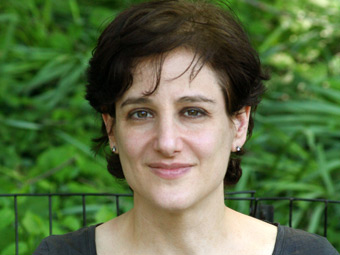Watch the trailer for “From Dark to Light,” above.
A: I am working on a multimedia literacy project that will first launch in Minneapolis in Spring 2012. This museum, designed by American architect James Biber, will be transportable to urban areas in the U.S. and is being developed to educate and empower low-income groups in the K-3 grade range. Inside the museum, we will present a digital/interactive/touch-sensation/experiential exhibition about poetry, punctuation and reading. I am developing this proposal with Holly Willis, Ph. D., Director of Academic Programs
 Institute for Multimedia Literacy
 School of Cinematic Arts
 University of Southern California and with Juan Delcan, Spanish director, artist and animator, now working at Click 3X.
Q: What is the best tool or innovation you’ve found that has come out in the last year?
A: I work with students at the School of Visual Arts in New York City and with high school students who want to enter a creative industry. Naturally my colleagues and I embrace every new technological development that we see or read about, sometimes hourly. However, I prefer to remember that there is no substitute for naivetà©, raw energy, collaboration and conversation. As I learned from my 10 years of living in Europe, there can be no equivalent to sitting around a table in the French countryside, with incredible food and wine, and debating an idea. I fear that in 2011, in America, we often lose sight of this.
Q: What project (film, television, commercial or music video) most impressed you in the last year? Why?
A: “Nobody’s Business” (1996), a film about Alan Berliner’s relationship with his father. I was introduced to this work 15 years after it was made. However, obviously, a good work of art will never be dated. I would recommend this and Alan Berliner’s other films to everyone, artist or not. However personal Alan Berliner’s work is, is it about a shared journey that that we as humans all take at some point in our lives, no matter what country we live in.
Q: What’s the best, or your favorite, project that you worked on in the past year? And why?
A: I am currently working on a short essay film about American designer and typographer Carin Goldberg. Carin was my typography teacher in my BFA studies at a graphic designer, also at the School of Visual Arts. Since 1986, I have directed and produced a body of short experimental films, using the form of a cinematic diary to examine eccentric and unusual inner lives. I have always believed that an idea from a singular inception (sometimes even on the most intimate level) can grow over time to touch the world. I am interested in revisiting a life or a career from the very start, from the beginning; the basic concept as initial thought, as an impulse, as an ineffable compulsion, an intuition; to reframe and reinvent an action as simple as one pair of hands touching pencil to paper.
During my filmmaking process, I record oral histories with people directly related to the subject, or with scholars and historians who have studied their life and work. In many cases, this may be the only form in which these stories and insights live. My process involves creating the audio tracks of the film first, and then collecting or generating images that provide a visual interpretation for the sounds and words that help me illuminate the trajectory of a person’s life and its relationship to their work. Whenever possible, I obtain original artifacts from the subject’s life, working with a large team of collaborators on each different aspect of the film. As an experimental biographer, I often find myself riffing on the creative exercise known as exquisite corpse, invented by the surrealists in the 1920s, in which the process of putting various historical facts, personal stories, and anecdotes together yields results that are often unpredictable and unusual. However long (and sometimes painful) these film journeys can be, they are always thrilling and they are always a Ph.D. experience about a subject on some level.
Q: Who are the top 4 artists on your iPod?
A: Robert Miller, Dalida, Maria Callas, and Times Talks from iTunes
For more information: www.benitaraphan.com.
Sections: Business
Did you enjoy this article? Sign up to receive the StudioDaily Fix eletter containing the latest stories, including news, videos, interviews, reviews and more.

Leave a Reply